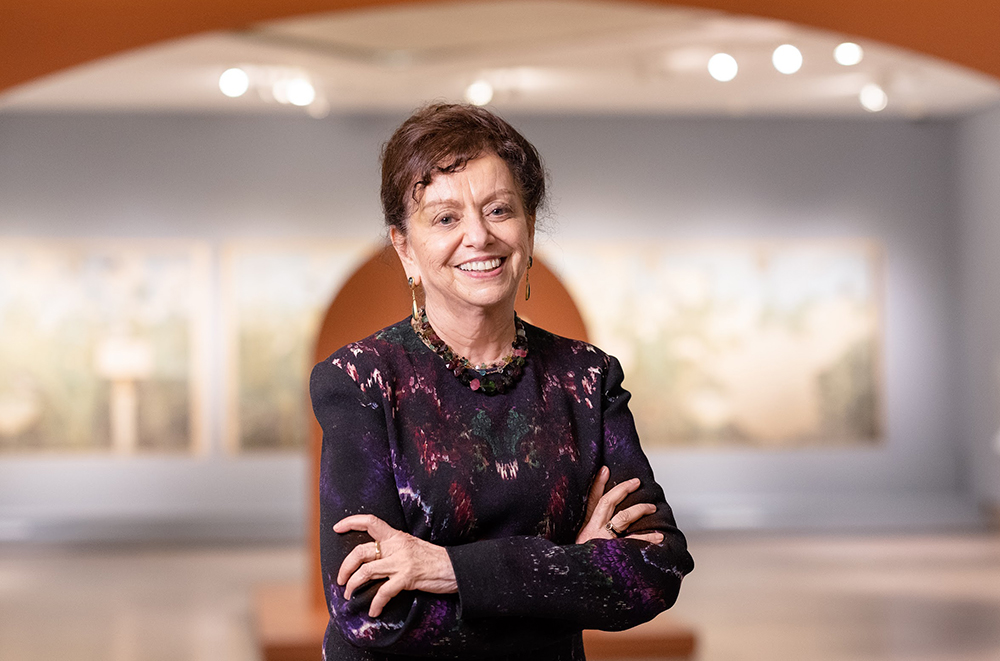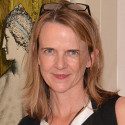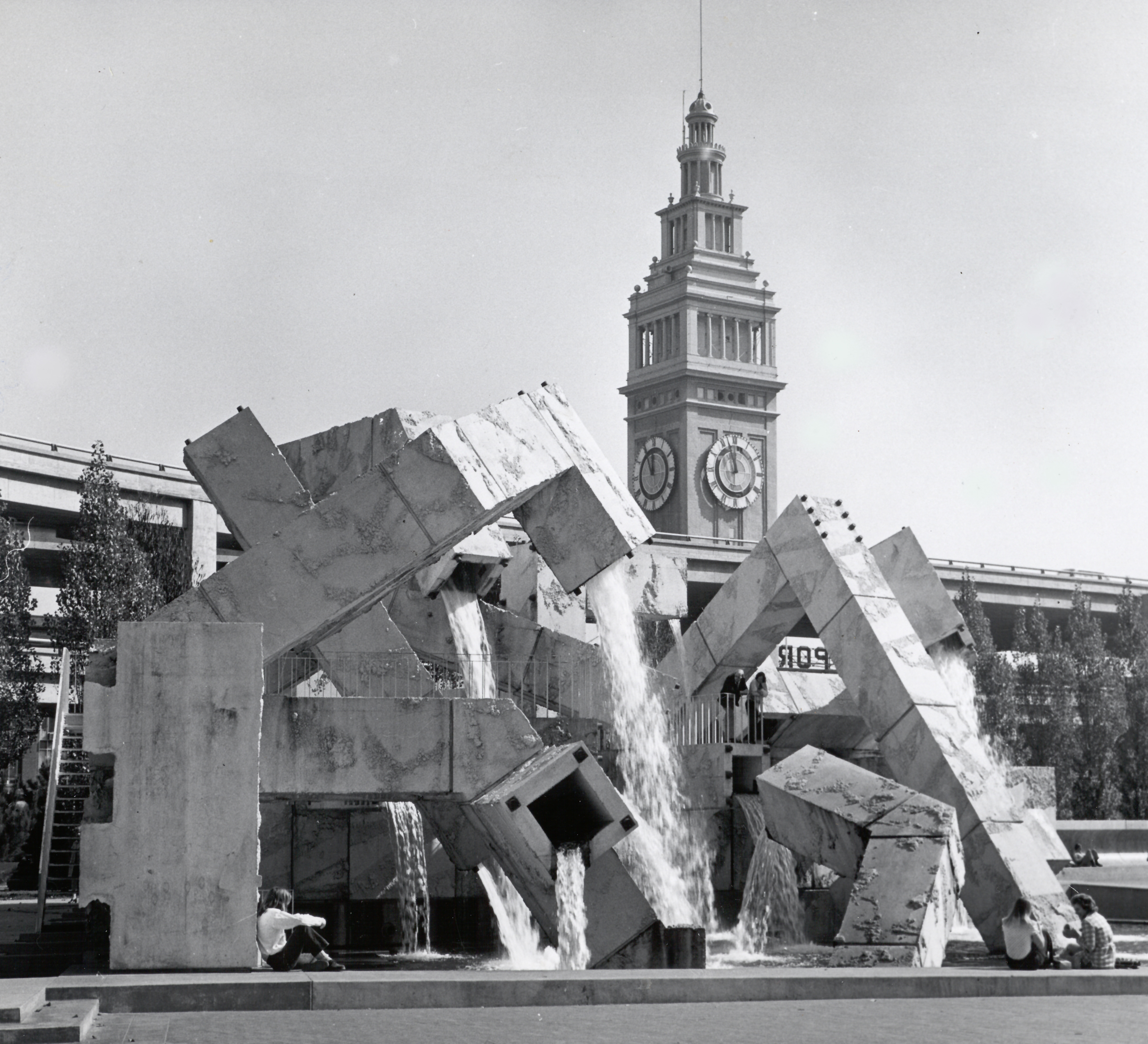
Renée Dreyfus: The Curator Behind "Ramses the Great and the Gold of the Pharaohs"
By Catherine Barry
Discover the Wonders of Ancient Egypt's Greatest Pharaoh at the de Young Museum
Whether or not you got to travel this summer, an electrifying journey across the sands of the Sahara Desert to Ancient Egypt awaits at the de Young museum.
"Ramses the Great and the Gold of the Pharaohs" dives into the life of one of the most remarkable and celebrated rulers in world history, Ramses II. The show presents exquisite sculpture, and precious treasures (many that have never before left Egypt, and may never again) demonstrating the opulence and power of the ancient Egyptian civilization and documenting the life and work of Ramses II, crown prince and third pharaoh of the Nineteenth Dynasty who had a staggeringly long 67-year reign.
Royal statues, sarcophagi, magnificent jewelry, and ornate golden tomb treasures reveal the fabulous wealth of the pharaohs, the astonishing skill of ancient tomb builders, and the superb workmanship of artists. The wealth and power of Egypt’s Golden Age oozes from the more than 180 objects (some recently discovered) with immersive state-of-the-art multimedia production and drone photography. We’re talking XII hundred B.C. and XIII hundred B.C. but Ancient Egypt has never looked so contemporary.
One of the golden powerhouses behind this extensive exhibit is Renée Dreyfus, who serves as the Fine Arts Museums’ first George and Judy Marcus Distinguished Curator in Charge, Ancient Art. Ever exploring art and life in ancient Mediterranean civilizations, over an impressive 45 years with the Museums, Dreyfus has organized more than 20 exhibitions ranging from the 1979 “Treasures of Tutankhamun,” which first brought Egyptomania to San Francisco to the recent “Last Supper in Pompeii: From the Table to the Grave” at the Legion of Honor in 2021. Her unique perspectives and insights on the cultural heritage and artistic development in Mediterranean archaeology and the ancient Near East are reflected in every show.
SF/Arts had the honor to chat with Renée Dreyfus as the show prepares to open to the public this month.
SFA: First of all, let us congratulate you on your new title of George and Judy Marcus Distinguished Curator and Curator in Charge of Ancient Art. Your career with the Fine Arts Museums is beyond impressive. Before we get stuck into the splendors of this upcoming show, can you tell us a little about how you became interested in the world of ancient art. Were you gripped as a youngster or did the interest develop during your career?
Renée Dreyfus: Thank you! I was lucky enough to grow up in New York and have parents who took me to museums. I was hooked on Egyptian art at age three when my father took me to the Brooklyn Museum and I was transfixed with the Egyptian collection. My mother gets credit as well. It was she who read me Greek mythology when I was young. I've had great mentors in college and graduate school, and I've never wanted to stop learning about the ancient world and the history of ideas.

Renée Dreyfus, Distinguished Curator and Curator in Charge of Ancient Art at the Fine Arts Museums of San Francisco. Photo by Gary Sexton, courtesy of the Fine Arts Museums of San Francisco.
SFA: Where do you even start with an exhibit of these proportions? Have you been dreaming this one up for years?
RD: Everywhere in Egypt, you see a monument or sculpture relating to Ramses the Great. He is regarded as the most celebrated and most powerful pharaoh during Egypt's Golden Age, the New Kingdom. I always thought an exhibition about this pharaoh would make a fascinating introduction to his life and times. When I learned that the eminent Egyptologist Zahi Hawass was organizing one, I jumped at the chance to bring it to San Francisco.
SFA:
What do you think made Ramses II so powerful? He fought the Hittites and signed the world's first official peace treaty, undertook massive building programs — and still managed to father more than one hundred children. What more did you learn, and what surprised you most when uncovering the history?
RD: Ramses II was not just king of Egypt. He was considered a living god on Earth, the incarnation of the sky god, Horus, the god of kingship. His accomplishments were so numerous and impressive he is known through history as Ramses the Great and was even a legend in his own time. He left behind an unequaled legacy of cities, buildings, temples, colossal statues, and impressive accounts proclaiming his famous exploits. I was surprised to learn that although his successes on the battlefield might sometimes be inconclusive, Ramses is always portrayed as the victor trampling his enemies. He left behind a legacy in which he and Egypt always came out on top.

Installation view of "Ramses the Great and the Gold of the Pharaohs." Image provided by World Heritage Exhibitions and courtesy of the Fine Arts Museums of San Francisco.
SFA: Without sounding like we’re asking you to pick a favorite child, what is your personal favorite part of the exhibition?
RD: How right you are about choosing a favorite child. Every gallery in the exhibition has something that calls out to me because of its beauty and the skill of the artist who created it. One of my favorite works isn't even an image of Ramses II, but is a sarcophagus discovered in the tomb of Sennedjem, one of the artists who worked on the tombs of Ramses and his father, Seti I. It's a brightly painted box, which once held Sennedjem's mummy, with imagery that illustrates the deceased's funerary scenes and spells from the Egyptian “Book of the Dead,” a guide for negotiating the afterlife and attaining resurrection. It is installed in a gallery with photographic reproductions of the painted walls of the tomb in which it was discovered. They are as fresh as the day they were painted as they relate Sennedjem's journey to the afterlife, a peaceful land of endless harvests. I think that these illustrations will add to everyone's understanding of the difficulties in getting to the afterlife and what happens once you have achieved eternal bliss.

Bracelet of Sheshonq II with Eye of Horus Egyptian, Third Intermediate Period, Dynasty 22. Gold, lapis lazuli, carnelian, and faience, 1 3/4 x 2 3/4 in. (4.5 x 7 cm) Egyptian Museum, Cairo. Photo by Sandro Vannini. Image courtesy of the Fine Arts Museums of San Francisco.
SFA: These are extremely precious treasures. Can you say a few words about the role of the Supreme Council of Antiquities of the Arab Republic of Egypt and World Heritage Exhibitions in providing for this exhibit?
RD: It is thanks to the Egyptian Ministry of tourism and Antiquities and the Supreme Council of Antiquities of the Arab Republic of Egypt that these precious treasures have left Egypt. They reviewed each object to assure that they were not too fragile to travel. They also agreed to include recently excavated objects, like the animal mummies and other objects found in the catacombs of Saqqara, which have never been on view before. It is thanks to Zahi Hawass, the curator, and the World Heritage Exhibitions, the organizer of this extraordinary installation, that we are able to bring this exciting and unique exhibition to the de Young.

VR component, "Ramses and Nefertari: Journey to Osiris" at "Ramses the Great and the Gold of the Pharaohs." Image provided by World Heritage Exhibitions, courtesy of the Fine Arts Museums of San Francisco.
SFA: An “immersive” virtual reality experience does not come to mind when thinking ancient art, so this may be one of the first for you? Is it a challenge to weld together a traditional museum presentation and this contemporary experience?
RD: Actually, my first virtual experience was in 1995 at the de Young’s old building. This program provided a “fly-through" of the Temple of Isis and the theater of Pompeii. It may have been the first time a museum presented such a cutting-edge opportunity. It was early on in this technology and some of our visitors found it hard to navigate the equipment and walked through walls and up columns. Today's VR programs have come a long way and I know that they can add greatly to the experience of an exhibition about the ancient world. Because so much of Ramses the Great's contributions are enormous architectural structures, VR is a perfect way to present them to our visitors.
SFA: Thomas P. Campbell, Director and CEO of the Fine Arts Museums of San Francisco tells us that once the exhibition completes its international tour, these objects will return to Egyptian museums and will likely not travel again for decades.” Some say they may never travel again. What are your thoughts on this?
RD: I agree with Tom. Since Egypt is currently reorganizing the display of their antiquities in various museums throughout the country, they had to consider the importance of the object to its museum and weigh it against its importance in the exhibition. Thanks to Zahi Hawass, the former Minister of Antiquities, they approved many rare and spectacular works to travel. Once they return to Egypt they will stay put as some of the glorious pilgrimage pieces people go to Egypt to see.
SFA: We’d like to thank you for taking the time to talk to us, your 45 years of service, and this terrific show.
"Ramses the Great and the Gold of the Pharaohs"
de Young museum / August 20, 2022 – February 12, 2023



